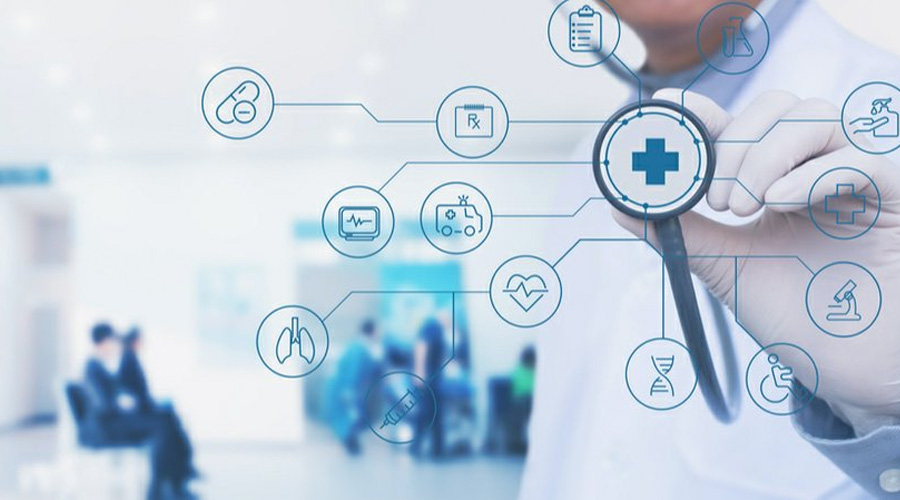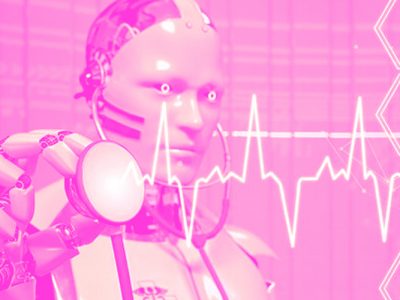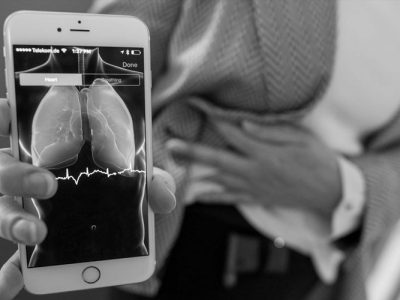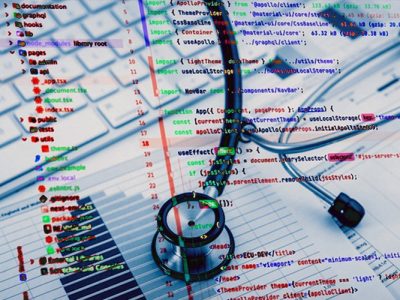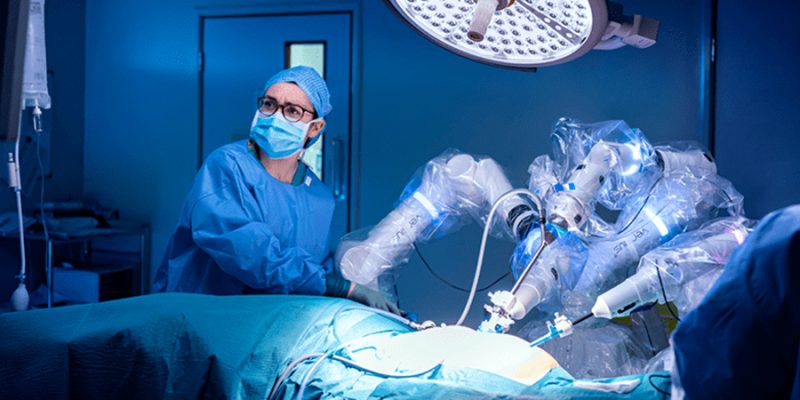
With the application of artificial intelligence and robotics, the healthcare business is reaching new heights in terms of improving the sector’s overall condition
For more than 30 years, robotics has employed in the healthcare business. These robots range from laboratory robots that deal with medications to surgical robots that do surgeries or procedures on their own to robots that care for patients after surgery. Robots can help humans stay healthy for a long time without the use of medication or hospitalisation. Intel, for example, provides new technologies for the creation of health robots such as surgical robots, modular robots, service robots, mobile robots, and autonomous robots, allowing it to expand its reach in a variety of health-related fields.
AI-driven robotic surgery is a mechanical device that allows doctors to focus on the difficult components of surgery by assisting with surgical tool handling and positioning during procedures. Their usage reduces surgeons’ instabilities during surgery and assists them in improving their abilities and performing better during interventions, resulting in improved patient outcomes and lower overall healthcare costs.
Surgical robots can assist find important insights and state-of-the-art procedures by scrolling through millions of data sets using machine learning algorithms. Instead of using a physical measuring tape, Asensus Surgical has developed an achievement laparoscopic AI robot that offers information to doctors, such as tissue size. Simultaneously, human abilities are employed to train these robots through demonstration – and to instruct them by emulating surgeon-led procedures.
The interaction between people and robots is a field that allows human surgeons to manipulate surgical robots without touching them. Head or hand motions, speech and voice control, or the surgeon’s gaze can all be used to manipulate the patient. Robotic laparoscopes have been controlled remotely using surgeons’ head motions. “FAceMOUSe,” a human-robot interface, tracks the surgeon’s facial movements in real-time without the use of any body-contact equipment. The mobility of the laparoscope is controlled easily and precisely by the surgeon’s facial expressions, allowing for non-invasive and nonverbal interaction between the human as well as the robot throughout a variety of surgical operations.
How does the robotic surgical system work?
Your surgeon creates small incisions within your body then inserts minuscule equipment and an elevated three-dimensional camera utilising the Robotic system and occasionally skin incisions are not necessary at all. Your surgeon then manipulates that equipment from a neighboring console to carry out the procedure.
Benefits of robotic surgery
Having Robotic-assisted surgery has several advantages. A robotic-assisted surgery helps you both directly (shorter recovery time) and indirectly (better visibility for the surgeon, resulting in a more precise procedure). Other advantages include:
- Your surgeon has more dexterity and range of motion
- Your surgeon sees a highly-magnified, high-resolution picture of the operation field
- Your surgeon has easier access to the region being operated on, which means a shorter stay in the hospital and a lower risk of infection
- There will be less blood loss and blood transfusions
- There is less discomfort
- Improved recuperation time
- Return to normalcy more quickly
Any doctor can’t just stroll into an operating room and do a robotic operation without the right training. The Robotic surgical system, on the other hand, may be learned by any clinician. Robotic surgeons, like many other technologies, were quickly adopted by global tech giants like the United States and Europe. When the benefits of robots in healthcare were known, several other nations quickly followed suit. A camera arm and mechanical arms with surgical tools connected to them are the most often utilised clinical robots in the healthcare business. When the Covid-19 epidemic broke out, physicians were denied unlimited access to patents, and the notion of robotic surgery, particularly telesurgery, sprang to the fore. Robotics as a protective layer, physically separating healthcare staff and patients, was considered as a potent instrument to tackle the ever-present worry of disease contamination and surgery volumes. The robotic surgical system is the most popular on the market.
Emergence of telesurgery
Robots have progressed, yet people continue to have reservations about using them in healthcare, particularly for crucial operations such as surgery. While there are still concerns about the future of robots in healthcare, the notion of telesurgery has become more simplified as a result of the Covid-19 epidemic. Telesurgery is a surgical operation performed utilising robots and computer technologies from a distance. Even though the first demonstration of telesurgery occurred in 2001 when doctors in New York performed surgery on a 68-year-old lady in Strasbourg, France, the technique acquired prominence in 2020. In addition to the lockout and inability to do operations, the introduction of 5G technology has aided in the acceptance of telesurgery.
To give valuable clinical context, surgeons form relationships with scientists to acquire, analyse, and categorise data throughout each step of treatment. Artificial intelligence has the potential to revolutionise surgical education and practice. In the case of surgical robots, surgeon-robot collaborations will consider regulatory and legal concerns, such as the point at which an independent robot ceases to be a simple AI-driven device or regulatory bodies’ lack of experience in dealing with the approval and validation of this new type of machinery. The future of artificial intelligence in surgery is bright and it’s thrilling to see where it will lead us.


